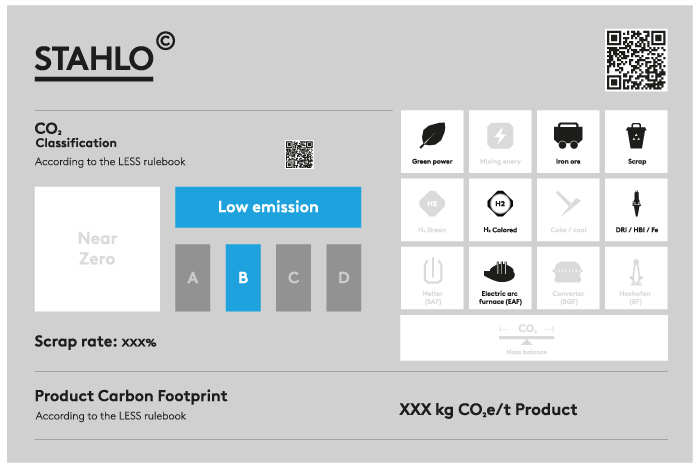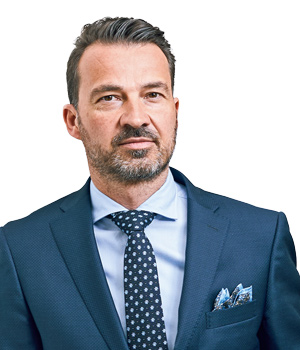Text Annedore Bose-Munde, Steffen Maltzan ––– Photography
The issue of what green steel actually is and how you define it has long been a topic of debate. LESS now aims to provide some clarity, along with a classification and calculation framework for low-carbon steel. Germany’s steel industry created LESS on the basis of international regulations and standards in order to improve comparability. According to Robert Habeck, Federal Minster for Economic Affairs and Climate Action, it is “Key in creating transparency and incentives for climate-friendly raw materials and products.” The objective is clear – to boost demand for low-emission steel and tap into new markets.
TRANSPARENCY PIONEER
Digital transparency in the supply chain has been an integral part of business operations at Stahlo for a few years now. The Friedhelm Loh Group’s independent steel service centre was quick to develop its green steel expertise and establish its own, neutral label to indicate the carbon footprint of specific steels. The company’s “Steel Compass” has made this steel-related data accessible to customers in an optimisation tool. The software clarifies the current situation regarding Scope 3 upstream emissions from past deliveries and highlights potential optimisations. Customers can specify their carbon targets and are given cost and material options for implementation. Validated to ISO 14067, the tool provides an accurate overview of the available carbon- optimised flat steel products the steel service centre can source, along with their partial PCF.
Stahlo has gone one step further with its Digital Material Pass (DMP) for steel coils, which includes all product data in a machine-readable format. This ensures seamless integration into future real-time automation of material data and provides the technical basis for transparency in value chains such as Catena-X, an ecosystem in the automotive sector. Data exchange is already possible, too.
CREATING COMPARABLE DATA
As a cross-company standard, LESS now provides an even broader foundation for ensuring the comparability of green credentials. Oliver Sonst, CEO of Stahlo, supports this standard, which numerous steel manufacturers helped to develop. “We are pleased that, by acting quickly to adapt to LESS, we can help spread the principle of clear comparability even further in the market,” he says, adding that Stahlo is also keen to provide customers with added value in the form of information. “We are adding further details to the classification and have developed additional icons for this purpose, for example to map the manufacturing route and more besides,” he reveals.
SUSTAINABLE QUALITY
LESS-certified companies will be required to disclose their scrap quota, their product carbon footprint (PCF) and other indicators. This will give steel users all the information they need to ensure the sustainable quality of products for their customers – a strong argument given that “environmental liability” is set to become more relevant, especially in the case of public tenders.
“It is important that LESS becomes a standard based on actual processes and reductions, ideally creating a values and pricing system. First, though, everyone needs to accept the standard, and it’s also clear that, besides transparent content, there must be an economic perspective for everyone involved as well,” concludes Sonst.

